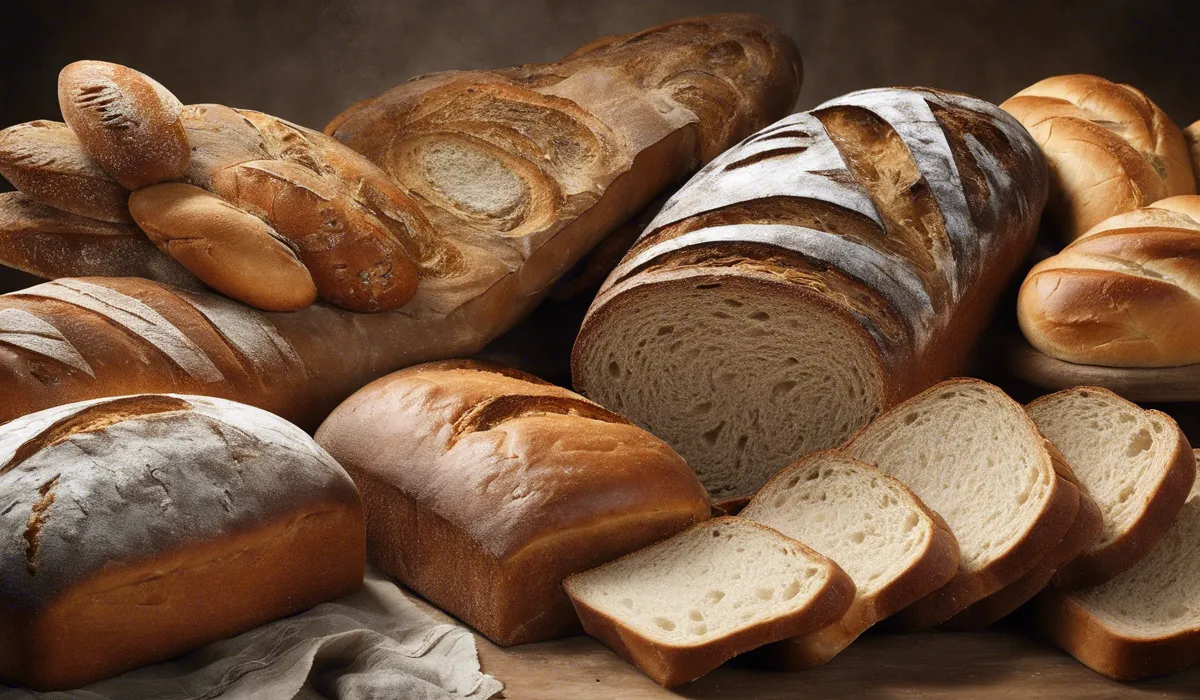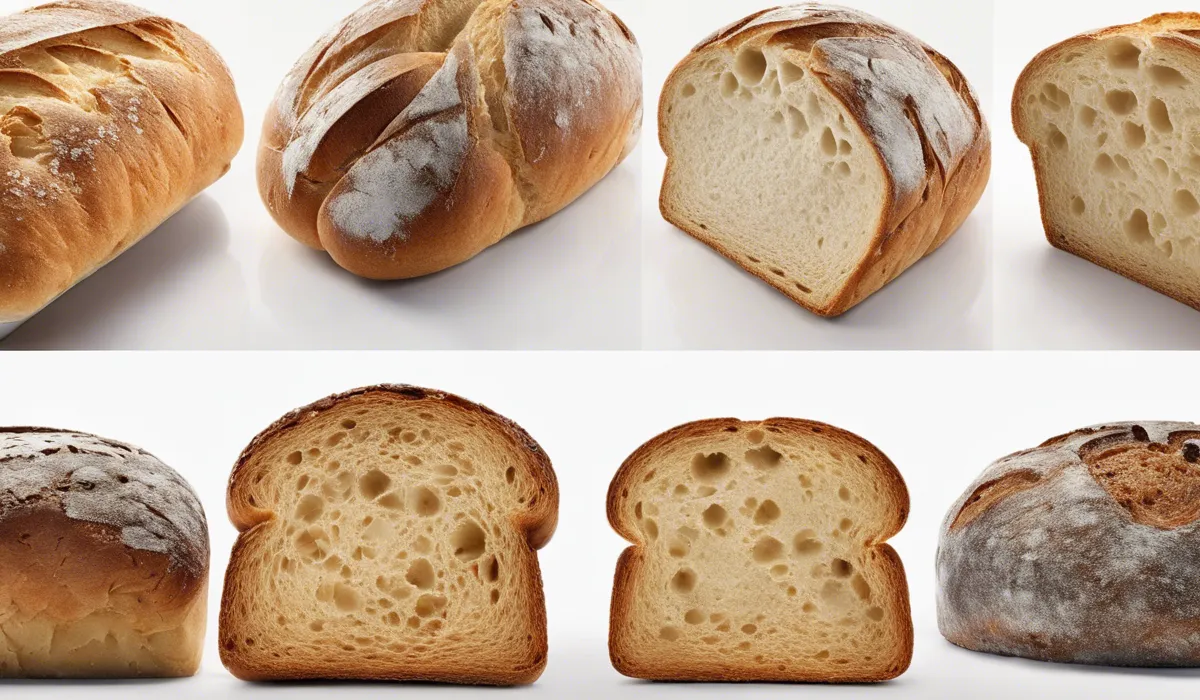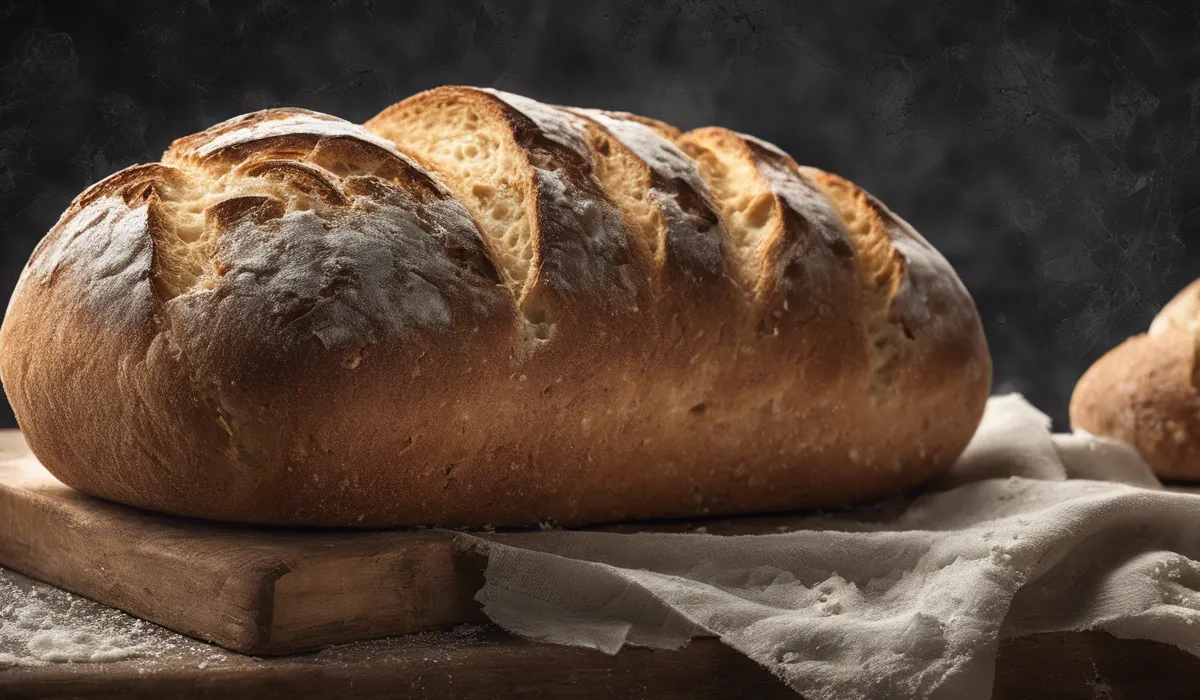Bread molds quickly due to moisture, warmth, and nutrients that favor mold growth.When bread is exposed to air, mold spores land on it and thrive in these conditions, leading to rapid mold development.
Factors Contributing to Bread Molding

Environmental Moisture and Humidity
Moisture in the air is like a party invitation for mold spores. When the air is damp, bread absorbs this extra moisture, becoming the perfect soft and moist home for mold to grow.
Kitchens and pantries often have fluctuating humidity levels, especially if they are near bathrooms or laundry rooms where steam is common.
This moisture can sneak into bread packaging, kickstarting mold growth even if the bread is inside a cupboard or breadbox.
High humidity areas are challenging for bread storage. Places with tropical weather or rainy seasons see bread mold faster because the air itself is like a wet blanket, wrapping around the bread and not letting it stay dry.
This is why bread can mold so quickly after you bring it home from the store.
Warmth and Temperature Conditions
Warmth is another friend to mold. Just like people enjoy a warm day, mold spores love warm temperatures to wake them up and get them moving.
Most kitchens are kept at comfortable temperatures for people, but unfortunately, this also means comfortable temperatures for mold on bread.
When bread is stored in a warm spot, like on top of the refrigerator or near the stove, mold sees this as a warm bed where it can grow and spread.
As temperatures rise, the rate at which mold grows can accelerate. This is why bread left out in the summer might mold faster than bread in the winter.
The warmth speeds up the life cycle of mold, making it more of a challenge to keep bread fresh.
Presence of Mold Spores in the Environment
Mold spores are tiny adventurers waiting for the right conditions to set up camp. They are almost everywhere, floating through the air, waiting to land on a surface where they can grow.
Because they are so widespread, it’s almost certain that a few will land on any loaf of bread left out in the open.
These spores are invisible to the eye, so even if bread looks clean, it could be covered in these tiny explorers.
Once mold spores find a moist and warm spot on the bread, they grab on and don’t let go.
This is why even bread that is stored properly can sometimes still develop mold, as the spores are already present in the environment and just need the right conditions to thrive.
Bread Composition and Preservatives
Bread is made of ingredients that mold finds delicious. Flour, water, and sometimes sugar and fats, are all nutrients that mold uses to grow.
Some breads have preservatives that help slow down mold growth, making them last longer on the shelf.
However, many fresh or organic breads don’t have these preservatives, which can be great for flavor and health, but not so great for keeping mold at bay.
Packaging and Exposure to Air
The way bread is wrapped up can make a big difference in how fast mold grows. If bread is not sealed properly, air can get to it. Remember, air carries those mold spores that are looking for a place to land.
Airtight packaging can help keep these spores out and keep the bread dry, which slows down mold growth.
When bread is left in a bag that’s not sealed, or when it’s kept in a breadbox that lets air in, mold has an easier time taking over.
This is why it’s important to check that bread is wrapped up tight after each use.
The Mold Growth Process on Bread

Initial Contamination and Spore Germination
When mold spores land on bread, they act like seeds planting themselves in soil. At first, we can’t see them because they are too small.
But once they find the right spot with enough moisture and warmth, they start to grow. This beginning stage is when the spores open up and begin to form threads that dig into the bread, which is the start of the mold’s root system, known as hyphae.
Mycelium Development and Spread
As the mold’s roots grow, they form a network called mycelium. This network spreads out under the surface of the bread, like vines weaving through the ground.
The mycelium is the main body of the mold, and it’s what absorbs all the nutrients from the bread, allowing the mold to grow and thrive.
Visible Mold Colonies and Spoilage
After the mycelium has spread out, the mold starts to form colonies. These are the fuzzy spots we see on the bread’s surface.
Each spot is a bunch of mold growing together, making a little mold community. As these colonies get bigger, they can merge together, and that’s when we really notice the bread has gone bad.
Types of Mold Commonly Found on Bread
There are different kinds of mold that like to grow on bread. Some common ones are Penicillium, Aspergillus, and Rhizopus.
These molds can come in various colors, like green, black, white, and even pink. While they all might look different, they all have the same plan: to eat the bread and grow as much as they can.
Prevention and Storage Tips to Delay Mold Growth

Proper Storage Conditions (Temperature and Humidity Control)
Keeping bread in a cool and dry place is key to slowing down mold. A breadbox designed to keep air out can help, or you can store bread in the fridge. The fridge is cool and dry, which makes it harder for mold to grow.
However, bread can dry out and become stale in the fridge, so it’s a balance between preventing mold and keeping the bread tasty.
Use of Preservatives and Natural Anti-Mold Ingredients
Some breads have preservatives to help fight off mold. These are added to the recipe to make the bread last longer.
Natural ingredients like vinegar can also help keep mold away. Homemade bread recipes sometimes include these ingredients to help the bread stay fresh without using chemicals.
Bread Selection and Consumption Habits
Choosing the right bread can help prevent mold. If you eat bread quickly, fresh bread without preservatives might work well.
But if you take longer to eat a loaf, maybe bread with preservatives or a longer shelf life is a better choice. Also, buying smaller loaves more often means the bread is less likely to mold before you finish it.
Effective Cleaning Practices in Storage Areas
Keeping the places where you store bread clean can help stop mold. If there are crumbs or old pieces of bread around, they can attract mold spores.
By cleaning the breadbox, cupboard, or fridge regularly, you make sure there’s no leftover food for mold to start growing on. This helps keep the whole area fresh and safe for storing bread.
FAQs About Bread Mold
Why does bread mold quicker than some other foods?
Bread molds quickly because it provides the ideal conditions of moisture, warmth, and nutrients that mold spores need to grow.
What causes bread to mold when left out in the open?
When bread is left exposed to air, mold spores that are naturally present in the environment land on it and multiply rapidly in the bread’s moist and warm conditions.
How can the speed of bread molding be reduced?
Storing bread in a cool, dry place and keeping it sealed to reduce exposure to air and moisture can slow down the molding process.
Is there a particular type of bread that molds the fastest?
Breads with high moisture content and those made with organic, preservative-free ingredients typically mold faster than drier, preservative-laden varieties.
Does refrigerating bread prevent mold?
Refrigerating bread can slow mold growth by lowering the temperature, which is less favorable for mold spores to thrive.
Final Thoughts
Bread molds quickly as it provides an ideal environment of moisture, warmth, and nutrients that mold spores, omnipresent in the air, need to flourish.
Once bread is exposed to the air, these spores settle on its surface and exploit these favorable conditions to propagate rapidly.
